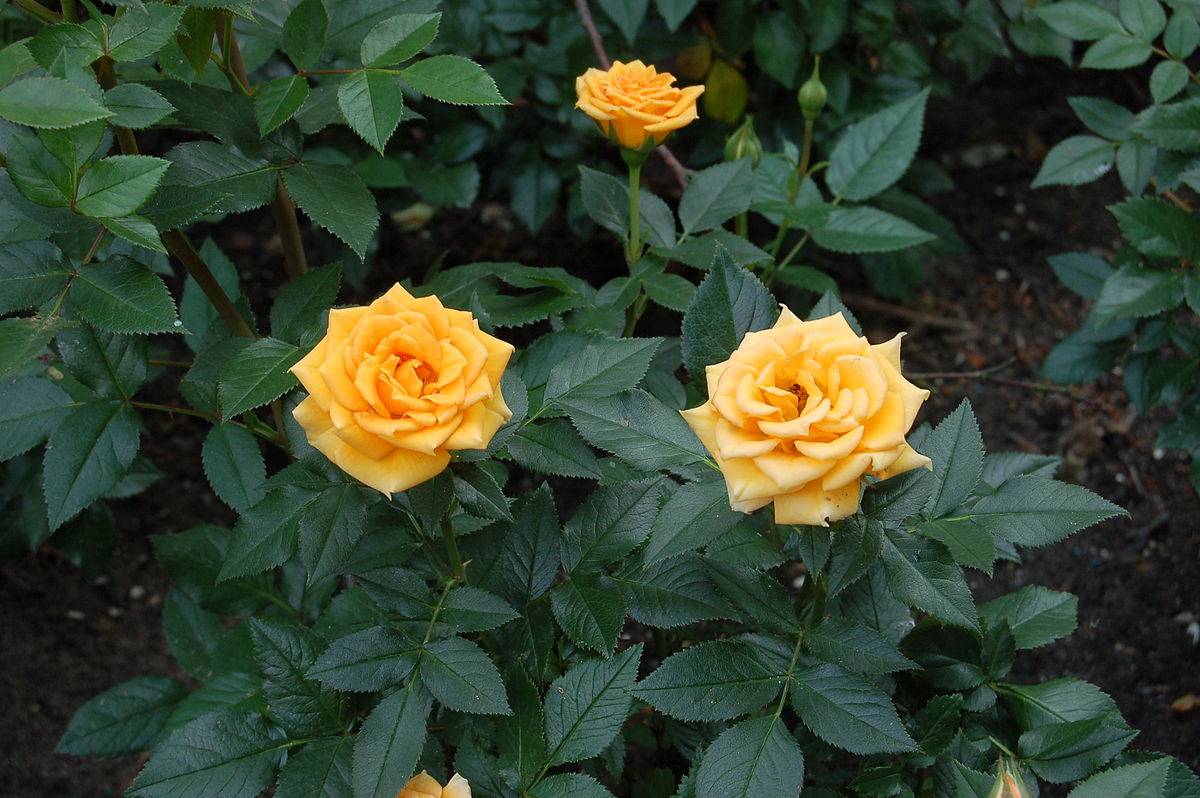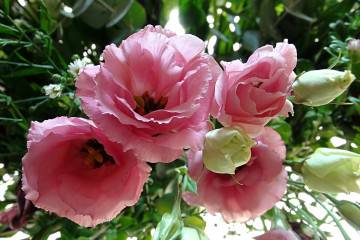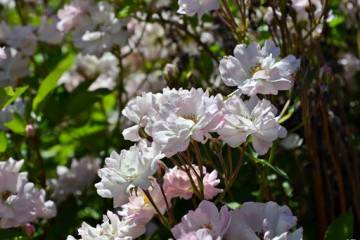Own-rooted roses - what are they, varieties
Content:
Before anyone thought of making cuts on the shoots of a wild rose and inserting eyes of a different variety into it, only self-rooted roses were bred. They took root under ordinary banks. But budding made significant changes to this process, because of which it accelerated. But it is worth considering the advantages and disadvantages of each type of flower in order to decide which is best.
What are own-rooted roses
Not everyone knows what it is - own-rooted roses. These are the shrubs that have grown from cuttings. Previously grafted variants are usually sold in markets and stores. However, if you want to grow these plants at minimal cost, then it is recommended to choose the self-rooted roses. They will have to spend more effort, but the result will meet the expectations of the gardener.
How do rooted roses differ from grafted ones?
To decide which roses are better - grafted or rooted - you need to find out about all their advantages and disadvantages. There are quite a lot of differences between the species. For the successful cultivation of a rose garden in a garden plot, it is recommended to choose both of them, since they have differences that can be beneficial.
Benefits of each type of roses, their endurance
When choosing a shrub to decorate a personal plot, you need to pay attention to their description.
The frost resistance of plants does not play a special role in choosing the type of rose, since they will have to be covered in any case. Roses on their own roots will recover if at least one bud survives. Grafting of plants weakens them somewhat, and therefore the bush will survive if the bud is covered with earth. However, self-rooted flowers are more frost-resistant.
The grafted plants develop faster and begin to bloom earlier. Varieties of rooted roses develop longer, and therefore begin to differ in decorative properties closer to the age of five. Another point follows from this - grafted flowers are less viable.
Planting in an area with nearby groundwater makes sense to carry out only with unvaccinated plants. The rose's own roots go 50 cm underground, and in the grafted - by a meter. Caring for a plant means feeding the soil, and in the first case, it will be easier to produce it.
It is quite difficult to vaccinate bushes, which not every grower can cope with, but growing from a cutting is simple if you follow the instructions.
The difference between the species is not as striking as it might seem at first glance, but these little things are quite significant when growing and caring for a rose garden.
How to care for a rooted rose
Young plants begin to bloom towards the end of summer. Because of this, situations often occur when, during the first frost, unopened buds remain on the bush. Therefore, they need to be covered for the winter, regardless of the frost resistance of the variety. Closer to autumn, it is recommended to stop cutting flowers.
Full care consists in the correct irrigation schedule and the introduction of fertilizers into the soil.Regular and abundant irrigation will help keep the plant healthy. Watering will help to grow and develop roses, even in a slight drought, so that they do not lose their decorative properties. In the cold season, it is required to reduce the amount of watering, and in winter to stop altogether.
In the first half of summer, it is required to start feeding 2 times a month. For this purpose, organic fertilizers are used, to which minerals can be added in liquid form. In the second half of summer, it is necessary to stop feeding with nitrogen, with the help of which the bush builds up the green mass, and switch to phosphorus and potassium, so that it can be prepared in the winter.
Breeding methods for self-rooted roses
The most popular and effective way of propagating self-rooted roses is cuttings. Even beginner growers can take up rooting of cuttings. This reproduction does not require the acquisition of complex budding skills.
It is important to take into account that climbing, semi-climbing and miniature roses are easily rooted. Medium rooted are hybrid tea, park, remontant, polyanthus, floribunda flowers.
Preparation of planting material
It is best to start the grafting process in early spring, and therefore it is recommended to take the material in the summer or autumn of the previous year.
Preparation of cuttings is as follows:
- Choose healthy annual shoots, cut off at 25 cm.
- Cut off the bottom leaves and peduncles.
- Place in a growth stimulant, honey or manganese solution.
- After drying, cut the bottom close to the kidney at 45 degrees.
- Prepare peat soil, fill containers.
- Deepen the cuttings so that both lower buds are in the ground, and the rest are above the surface.
After that, you can start planting in the ground.
Planting rooted cuttings in the ground
Planting self-rooted plants is required in an elevated place, since they love sunlight, fresh air and warmth. Also, before this, it is worth considering the degree of growth of the bush, since it is worth giving it enough free space.
Containers with seedlings must be buried in the ground so that their edges are at the level of the soil. Watering the seedlings is required daily, while covering with glass jars to create a greenhouse effect. It will take about a month for normal rooting.
After a month, leaves should begin to appear. The shelter should be removed at the moment when the bush becomes cramped in it. Every day it is worth starting to air the plant, thereby hardening it. After adaptation and complete rooting, you can transplant the rose. For normal life support, it is required to prepare a hole with a diameter and depth of about half a meter.
Drainage should be laid at the bottom of the pit to prevent stagnation of water. Then you need to fill in fertilizers from dolomite flour, ash and humus. A seedling must be placed on the formed hill, carefully sprinkled with earth and lightly tamped. Water abundantly, even if the ground was initially moist.
To evenly distribute the soil in the root system, the plant needs to be shaken, while pressing the soil nearby with your hands. Planting is carried out along the root collar of the bush.
Wintering rooted roses, features and useful tips
In the fall, it is worth starting to prepare own-rooted roses for wintering. For these purposes, it is required to carry out pruning, consisting in the removal of the tops of the shoots and young branches. It is also worth cutting off all damaged and diseased areas of the bush so that they do not start to rot in the shelter. After that, it is worth spilling the plants, creating a mound about 20 cm in height.
When the air temperature drops to -10-15 degrees Celsius, the soil will begin to freeze, and therefore it is worth additionally covering the bushes. For this purpose, a structure of spruce branches up to 25 cm high is built around the plant.
Not only the air temperature matters, but also the moisture in the soil in the autumn-winter period. If the plant gets wet and overwhelmed in the spring, it may die, and therefore it needs to be opened in time, as well as to ensure the drainage of water from the site.
It is worth removing the shelter gradually. When the snow has completely melted, then you can remove the leaves, and you need to break the ground only when the ground thaws. The lapnik should be removed after the buds appear.
It is not difficult to grow your own rooted roses. This activity is even easier than caring for the cultivated plants. To find out for yourself which of the species is better, it is recommended to purchase both for your own garden. They will combine well with each other, as well as complement each other depending on the old age of the bush: the grafted ones will bloom earlier, while the self-rooted ones will delight with lush greenery.




















